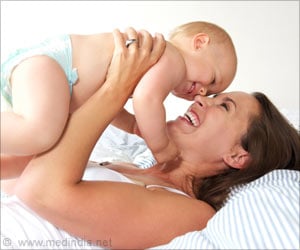Fewer than half of infants are always placed on their backs for sleep, the recommended safe sleep position.

Several factors affect the likelihood of a caregiver placing a baby in an unsafe sleeping position: race, education level, doctor's advice, and - newly revealed by this study - Theory of Planned Behavior (TPB) variables such as attitudes, subjective norms, and perceived control.
Since 2005, the American Academy of Pediatrics has recommended that to decrease Sudden Unexpected Infant Death, including Sudden Infant Death syndrome, caregivers should place infants exclusively on their backs for sleep. While there have been previous surveys of American mothers about their infants' sleep position, this new study is the first to examine behavior theory factors as potential causes for placing an infant on their back or not.
"We looked at what drives people's behavior for adhering to safe infant sleeping practices, and found that so much of what influences their decision-making has to do with attitudes and subjective norms," said Eve Colson, M.D., professor of pediatrics at the Yale School of Medicine. "What do people around you do? What do you see people do? Who is your adviser, and what advice are they giving you? All these factors are very important as they affect the behavior of new parents."
Colson and her team of researchers found that 77.3% of mothers reported that they usually placed infants on their backs for sleep but just under 44% of those mothers practiced the "gold standard" of both intending to place their infant on their back for sleep and always doing so in practice.
According to Colson, perceived control -- one of the behavioral variables they tested -- is one likely causes of the difference between intention and action. "For example, I want to exercise, but I don't have time to exercise," she said. "Or, in terms of safe sleep practices, I want to put the baby on its back to sleep, but my mom doesn't follow this direction when she's babysitting."
Advertisement
Other authors on this study include Nicole Geller, Timothy Heeren, and Michael J. Corwin. This study was funded by the Eunice Kennedy Shriver National Institute of Child Health and Human Development.
Advertisement
Source-Eurekalert















